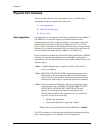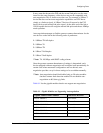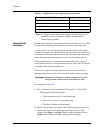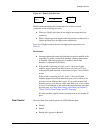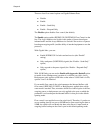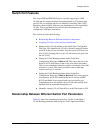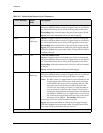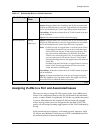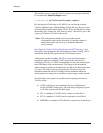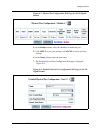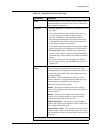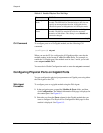
8-10 User Guide for the Avaya P580 and P882 Multiservice Switches, v6.1
Chapter 8
The second way is to assign the VLAN to a port is by using the following
CLI command in Enable/Configure mode:
(configure)# set VLAN <vlan-id or name> <options>
By selecting the VLAN name or VLAN ID, you can bind the selected
VLAN to additional ports. When binding VLANs this way, the port is part
of the flooding domain of the selected VLAN. This is an alternative to using
the binding types “bind to all” and “bind to receive”, that allows you to add
a port(s) to a subset of VLANs in the switch.
* Note: This configuration should only be used under special
circumstances and with the assistance of customer support as
undesirable results may occur (e.g. destination unknown
unicast storms).
See Chapter 6, “Using VLANs, Hunt Groups, and VTP Snooping,” for a
description of the parameters that will be displayed when viewing VLAN
information with the Web Agent and the CLI command syntax.
Although this method of adding VLANs to a port could be thought to
support the request for multiple VLANs per port (also referred to as
overlapping VLANs), it is NOT recommended on clear (non trunked) ports
due to the impact it has on the network. The impact is that destination
unknown unicast packets are flooded on the VLAN in which the source host
is located. This causes all ports assigned to this VLAN to receive the
destination unknown unicast. If enough of these destination unknown
unicast packets are being sent it could have a major impact on the network.
The following is an example of a problem with assigning more the one
VLAN to a port.
■ All PCs and Servers are connected to the Avaya Multiservice
Switch 10/100TX switch ports. The following configuring of ports
to VLANs are done with the Web Agent.
■ PC1 is a member of VLAN1 and is connect to switch Port 1
■ PC2 is a member of VLAN2 and is connected to switch Port 2
■ SERVER1 is a member of VLAN4 and is connected to switch Port 4



